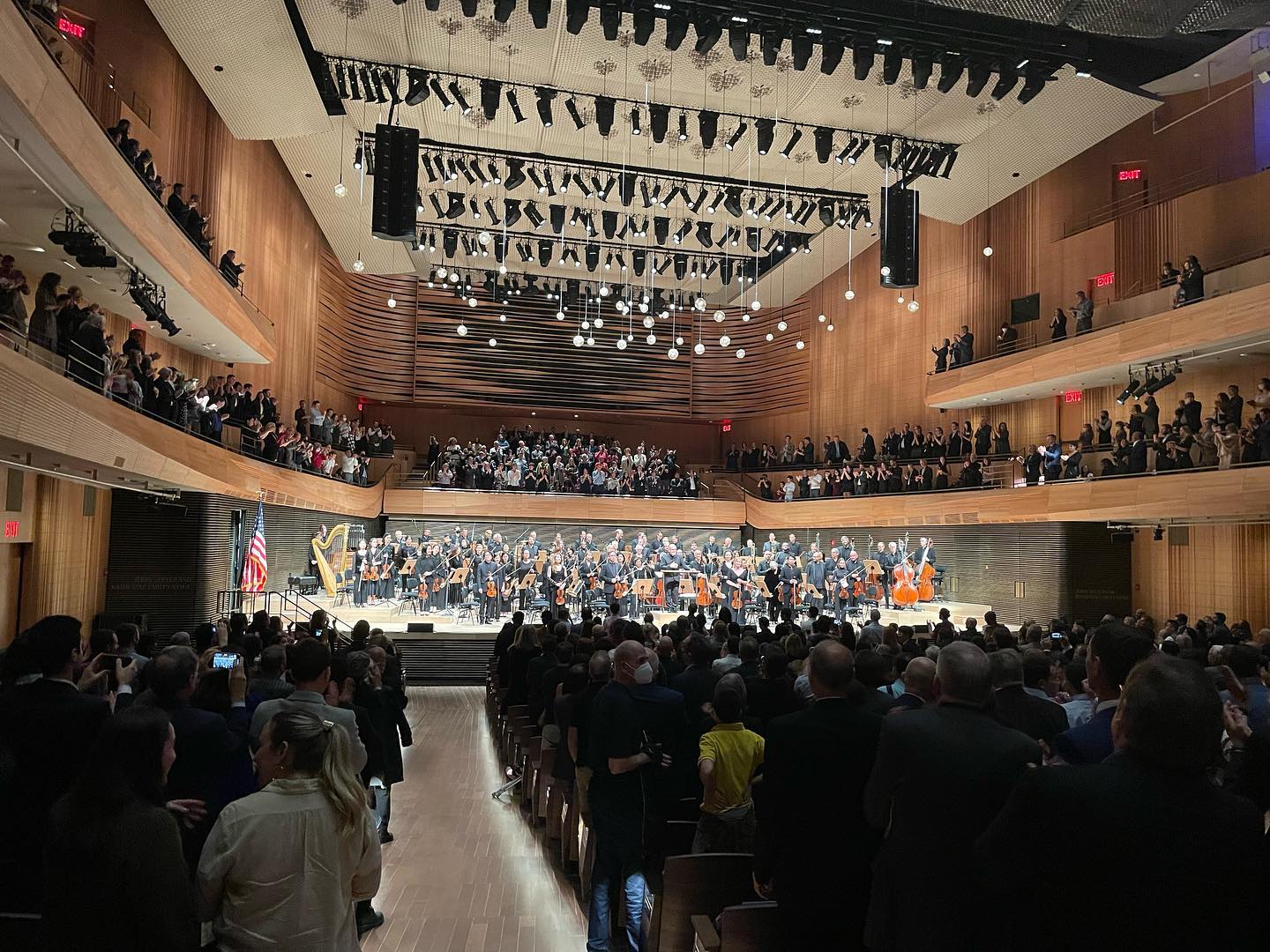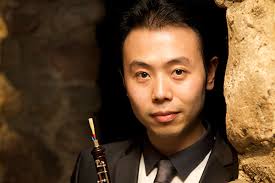Beethoven was the first to say, take five
mainWelcome to the 34th work in the Slipped Disc/Idagio Beethoven Edition
String quintets op 4, 29, 104, 137
Stop ten people in a Vienna street and ask them for Beethoven’s greatest innovations. Bet you three Karl Böhm LPs to a Mozart Kugel that not one of them will mention the string quintet.
Yet his insertion of a second viola into Haydn’s format of 2 violins, viola and cello was a breakthrough moment of Beethoven’s earliest years, a way of deepening the quartet sound into almost a chamber orchestra. It appears first as Beethoven’s opus 4 of 1795 and, while he does not revert to it much in his glory years, the very last catalogued work of Beethoven, opus 137, is a fragment for string quintet, as is what is believed to be his final written notes, the String Quintet in C major WoO 62 ‘Letzter musikalischer Gedanke’. These scraps alone should confirm the string quintet’s importance in Beethoven’s mind, but the form then inspires what many believe to be Schubert’s greatest masterpiece, two more by Mendelssohn, the American Quintet of Antonin Dvorak, as well as major works by Brahms, Bruckner, Nielsen, Milhaud, Martinu and more.
Some ascribe the invention of the string quintet to Mozart, but he described them as ‘viola quintets’, never aspiring to the orchestral balance that Beeethoven achieved.
The earliest quintet, opus 4 in E-flat major, could be titled That’s Entertainment. It’s frothy, Mozartian, four movements long and untaxing for the players’ fingers or the litener’s brain. There’s a paucity of available interpretations. Of the three listed on Idagio, I’m torn between the lush sound of the Venezia Quartet with extra viola Danilo Rossi (2006) and the more languorous Endellion Quartet with David Adams (2008), recorded in an idyllic Welsh castle. Both are excellent.
The opus 29, dated 1801, is far more extensively performed, with around 20 versions on Idagio. It is a hugely significant piece, throwing itself forward into the great works of Beethoven’s middle period with explicit hints in the opening movement of the first Razumovsky Quartet and the Archduke Trio. You can practically hear Beethoven clearing his desk of immature stuff and glaring resolutely ahead.
Passing reluctantly over a 1957 Baden-Baden radio recording of the youngish Amadeus Quartet with Cecil Aronowitz – high energy, inadequate sound – I can confidently recommend the same ensemble, recording for DG in Berlin a dozen years later, a very smooth finish.
The Guarneri Quartet have Pinchas Zukerman as spare viola on their fabulous 1980 performance, luxury casting in sumptuous sound. There is a good case to be made that Zukerman was the finest violist of his time, more relaxed and expressive than he ever sounded on the violin; this recording amply supports that proposition. The musical conversation here is of exceptional interest.
The Tokyo String Quartet also import Zukerman in 1993 – were there no other violists free that week? – and the results are commensurately less interesting. The Medicis (1994) are always worth hearing for their tight ensemble; Simon Rowland-Jones fits well as the extra viola. Then there’s the Elias Quartet with Malin Broman at the Wigmore Hall (2014), wonderfully communicative.
Two generations of the Kuijken family (2007) deliver a historically informed performance of unassuming affability, so unassuming that it might be my favourite of all thse listed above. There are a couple of versions by chamber orchestra colleagues, one from the London-based Academy of St Martin in the Fields, the other from WDR symphony orchestra in Cologne (2019); neither is strong on character. The Nash Ensemble on the other hand are fiercely expressive; their Hyperion recording is not yet on Idagio.
The opus 104 need not detain us long. It’s an upgrade of a piano trio from Beethoven’s first published set, opus 1. The Fine Arts Quartet offer a highly civilised reading with Gil Sharon (2008); the Lindsays with Louise Williams (2002) are a little too insouciant for my taste.
The Fugue for string quintet opus 137 is about two minutes long. As such, it requires intense concentration and repeated listening. its texture is that of the last quartets: austere, solemn, resigned, yet with a propulsive rhythm and a still-urgent life force – which is not surprising since it was written a few years before the final quartets and tacked onto the fi9nished catalogue by a cupiditous publisher. There is not much to hear. What there is, is best performed by the Delian Quartet with Gerard Caussé (2010). A further fragment survives as Quintettsatz in D minor.
The last known thoughts of Ludwig van Beethoven – String Quintet in C major WoO 62 ‘Letzter musikalischer Gedanke’ – are almost four minutes long and relatively untroubled by the preoccupations of mortality that imbue the final quartets. This is open-hearted Beethoven, sharing a melodic idea that has come to him around a distinctive grouping of musicians that he formed in his youth and in which he remains absolutely at home. The only credible recording I can find is by Daniel Hope (Violin), Ikki Opitz (Violin), Amihai Grosz (Viola), Tatjana Masurenko (Viola) and Daniel Müller-Schott (Violoncello), recorded in 2019 in Berlin at the Dahlem Jesus-Christus-Kirche.
See also this weekend: Is there such a thing as a Beethoven violinist
and
Are we wasting time on Beethoven’s 10th?
Join the conversation. Only at slippedisc.com





Mozart wrote string quintets of varying quality. My favorite is the c minor, his arrangement of his own wind octet. But his earliest appears to have been from 1773, when Beethoven wasn’t even three.
Michael Haydn, whose first string quintet with two violas inspired Mozart’s first, and Boccherini – loads of superb quintets with two cellos – preceded Beethoven. I don’t understand the attempt to make Beethoven first in the field. His music can stand up for itself without such misguided ‘help’.
“Some ascribe the invention of the string quintet to Mozart, but he described them as ‘viola quintets’, never aspiring to the orchestral balance that Beeethoven achieved.”
1) Those who ascribe the invention of the string quintet to Mozart have never heard of Michael Haydn or Luigi Boccherini.
2) Mozart never described his pieces in this genre as “viola quintets”, a 20th century colloquial way of referring to them. Mozart’s hand-written “Catalogue of all my Works” states just “Quintet for two violins, two violas and cello”.
3)What are your sources for purporting to know what Mozart – or Beethoven, for that matter – was aspiring to?
The orchestral accompaniment to Mozart’s Sinfonia Concertante for Violin and Viola, with division violas is a viola quintet writ large. His quintets in C major and G minor are among the most perfectly written chamber works.
Norman, you manage to simultaneously compliment Zukerman- “Zukerman was the finest violist of his time” and slam violists- “were there no other violists free that week?” I happened to perform Mozart’s G minor quintet with the Tokyo Quartet the week before they recorded it with Zukerman. While both efforts were quite successful, I would gladly defer to Pinky any time.
Come on; the late Mozart quintets are his greatest chamber works, with the possible exception of the clarinet quintet. Beethoven’s quintets simply don’t come close.
“There is a good case to be made that Zukerman was the finest violist of his time.” There is a compelling case that Zukerman was/is the finest violist of his or any other time. I’ve sure never heard anyone who could top what he could do on the viola. And I’m a decent violist myself.
If you can track it down (I have it on Columbia 78 rpm shellacs somewhere around here) do try to hear Beethoven’s op. 29 played by the Budapest String Quartet, in prime form, with Milton Katims as guest violist. It is wonderful music and wonderfully performed. But Mr. Levine nails it: there is nothing new or groundbreaking even in op. 29 that can hold a candle to what Beeethoven did later in his string quartets, or to what Mozart achieved in his G Minor and C Major quintets.
Indeed the Mozart viola quintets by themselves fully support Rossini’s marvelous reply when he was asked who the greatest of all composers was: “Beethoven. But … there was only one Mozart.”